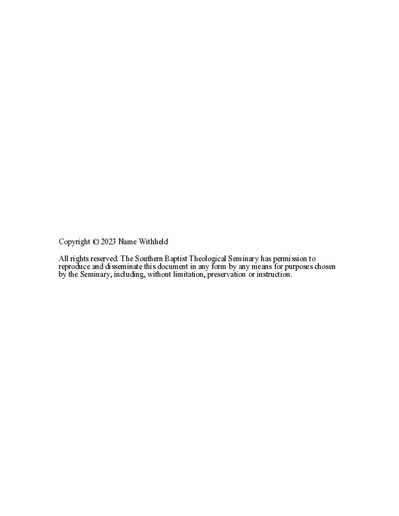The First Translation of the Bible Among Indigenous Islamic Peoples Using a Mediating Approach
Abstract
Bible translators among indigenous, Islamic people groups face difficult
decisions when translating key biblical terms. Translators may use a word-for-word
approach which can leave the reader with little meaning or the wrong meaning. Others
attempt to use Islamic idioms which can blur the meaning or reinforce Islamic beliefs. A
corresponding analogy can be observed in Bible translation spectrums which demonstrate
formal equivalence on one side and functional equivalence on the other. For first-time
translation work among these indigenous, Islamic people groups, I suggest using a
mediating approach.
In chapter 1 of this dissertation, I begin by examining the country where I have
lived many years, and evaluate the amount of Christian influence present today. I also
briefly analyze a unique language hierarchy that heavily influences the translation
process. Translation teams evaluate this information so they can better understand the
audience for whom they are translating. Chapter 2 presents a brief history of English
Bible translations and how the translators balanced between form and meaning. I
examine Bible translation spectrums and the theories behind essentially literal, highly
paraphrastic, and mediating translations.
Chapter 3 considers two essential concepts which affect the entire translation
process. The first idea is the importance of a balanced contextualization approach in
translation. In David Hesselgrave’s work, he outlines crucial aspects of contextualization
which influence Bible translation. The second concept looks at Ernst-August Gutt’s work
on relevance theory and the implications for Bible translators. Chapter 4 presents a new
rubric that combines John Travis’s CP model and the United Bible Societies’ Greek New
Testament grade-scale for variants. This rubric allows translators among indigenous,
Islamic people to test their key biblical terms more objectively to determine where their
translation falls on a Bible translation spectrum. Chapter 5 utilizes several indigenous
words in the rubric in order to demonstrate how one may visualize key biblical terms and
the benefits of a mediation approach. Chapter 6 concludes the dissertation.

